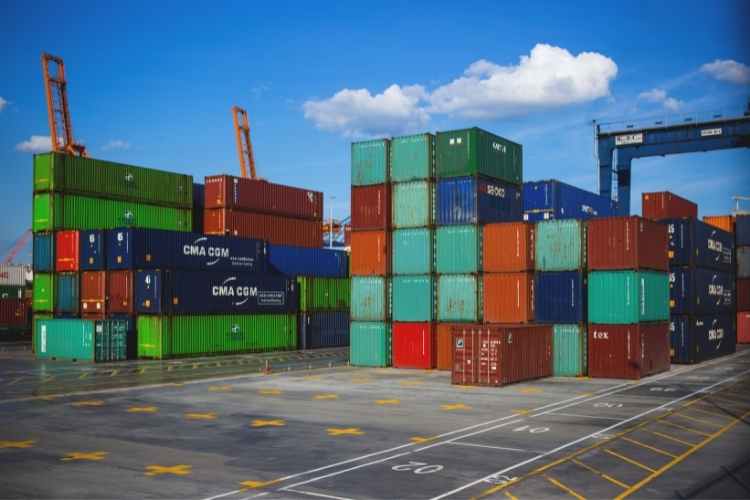In this blog we are going to tell you about What’s The Weight Of a Shipping Container, so read this blog carefully to get the complete information.
Prior to shipping, it is crucial to take into account the weight of a dry shipping crate. In the majority of countries, a container’s actual weight must be disclosed before shipping may start.
Various states have regulations limiting the weight of containers that are deemed appropriate.
You might be wondering why all the hoopla regarding container weights
For safety reasons, a container’s weight must be known. Container ships and shippers are put in danger by imbalanced or overweight shipping containers.
According to a rule issued by the International Maritime Organization (IMO) in 2016, the Verified Gross Mass (VGM) of a cargo container must be provided by merchants before it is packed for export. In reaction to the rising incidence of incidents involving overweight containers, the law was introduced.
RELATED – Zero Pain! New Injectable With Needle-Free Hyaluronic Acid
The weight of the payload, the gross weight, as well as the tare
Unladen weight, or tare weight, refers to the quantity of an unfilled transportation container. It is computed by deducting the maximal load capacity from the cargo weight.
The most weight that may be added to an empty container without risking damage is called the payload load. After the construction process is finished, the tare weight of a shipping crate is frequently soldered to the container doors.
The volume of the container plus the gross weight equals the total.
Sizes of shipping crates
Here is a summary listing the dry cargo container weight limits for 10 foot to 53 foot containers before you look more closely at each box size:
10ft.
A 10 foot dry container has a tare capacity of 2,850 pounds and a potential gross weight of 22,360 pounds. A 10 foot container is the best option when space is limited because of its normal external height of 8 feet 6 inches.
A 10 foot container is great for small space energy storage because it is about the size of a one-car garage. It is frequently chopped from a 20-or 40-foot shipping container because of its rarity.
20ft.
A 20-foot cardboard box weighs 5,071 lbs. when it is empty. This could increase its maximal gross weight.
24 ft.
A 24 foot dry container has a tare weight of 5,842 pounds. It can carry a gross weight of up to 58,410. It works well for tasks that don’t call for a 40-foot container or when a smaller vessel is insufficient.
40 ft.
The 40-foot shipping container is a well-liked option for deliveries, worksite offices, as well as storage, similar to the 20-foot containers. It weighs 8,554 lbs. 67,196 lbs. at optimum gross, as well as 58,642 lbs. at a maximum weight.
45 ft.
Due to its 9 ft 6in outside height, a 45-foot container is regarded as a high-cube container. Its ultimate gross weight is 71,650 lbs., as well as its tare weight of 10,362 lbs.
They are designed for lighter international cargo handling.
Factors Influencing Cargo Container Weight
- Container Height
Conventional height containers are one order of magnitude smaller than high cube containers (9 ft. 6 in.) and 8 ft. 6 in.). They are therefore heavier than typical shipping containers and contain additional metal.
- Dual Doors
A double-door (DD) container features double doors on both sides, as opposed to a regular cargo container, which only has gates on one end. A cardboard box with more doors has more metal; therefore, DD containers are typically heavier.
- Production Time Frame
Compared to more recent, modern transport containers, older ones are frequently heavier. This is so that stronger containers may be built with fewer metals thanks to advances in manufacturing technology.
RELATED – WHAT MAKES YOU BUZZY: FACTORS THAT AFFECT HOWEVER MANY BEERS TO GET DRUNKEN
Tare Weight Definition
Even without any stores or freight inside, a shipping container weighs a certain amount. Tare weight is the name of this weight. Un-uploaded weight is a name for tare weight. By deducting the tare weight from the maximum weight, we may calculate the weight of the products. However, because gasoline is also a factor in the computation, this method may result in erroneous results. On the doors of some containers, the precise tare weight is printed.
Weighing Techniques for Shipping Containers
It might be quite difficult to weigh a shipping container that is completely loaded. The following list includes the three techniques for weighing shipping containers:
In this technique of measuring, a weighing system is installed on the truck’s rear suspension and therefore is set to provide an indicator of how much weight is on the vehicle. Due to its accuracy range of 3% to 5%, this approach is not very effective.
Weighbridge: A showed that the initial is a sizable platform scale that determines the payload and size of heavy vehicles. The digital meter shows the weight of the car. The accuracy ranges from 0.2% to 0.5%. This approach can be a little pricey.
Axle Weigh Pads: The axle weighing pads are able to gauge the weight of both stationary and moving vehicles. A central indication receives the data that is discovered. This gadget is lightweight, transportable, and affordable.
Conclusion
We Hope this blog is sufficient enough to provide the information about What’s The Weight Of a Shipping Container. Thanks for reading this blog.
